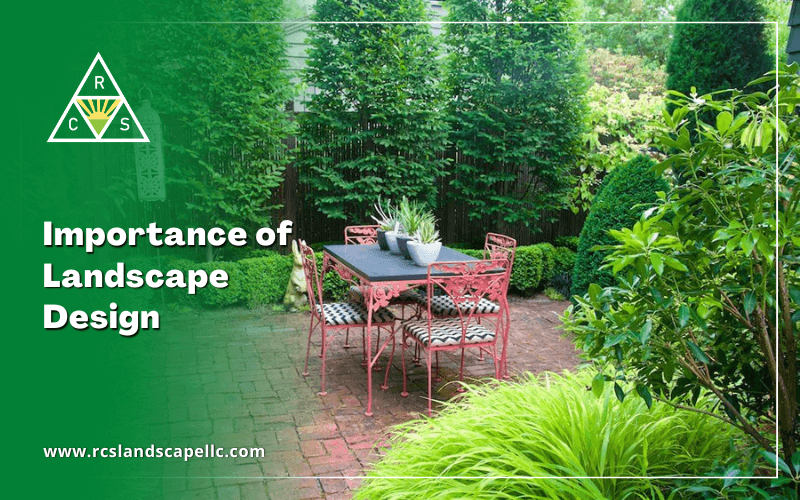The Definitive Guide to Landscape Design
Table of ContentsLandscape Design Things To Know Before You Get ThisThe Single Strategy To Use For Landscape DesignGetting My Landscape Design To Work5 Simple Techniques For Landscape DesignIndicators on Landscape Design You Should Know
A backyard can generally be separated right into three areas: public (the front backyard), personal (the back yard), and service (normally the side lawn). The location of task locations depends primarily on the type of location, the size of space required, the type of task, and the desired closeness to various other activities and frameworks.The outdoors wall surface of the house often works as the first wall or beginning point of an outside space. Incompatible uses need to be divided, and relevant activities, such as food preparation and dining, should be created to make the lawn more reliable and pleasurable. When making use of hardscape to create areas, make use of building and construction material similar to that made use of in your home for connection from your house into the yard.
Linked areas. Credit Report: Gail Hansen, UF/IFAS Using comparable hardscape features and repeating plants pulls the eye around the yard. Essential factors along the road can be stressed with plantings or functions that attract interest and motivate activity in a particular instructions. Moving along the path takes a person from one location to the following and allows the user to have a range of experiences.
The Facts About Landscape Design Uncovered

For emotional comfort plants are utilized as physical or suggested barriers for privacy and safety. Physical barriers obstruct both the sight and access to an area and consist of fences, walls and plant bushes. Indicated barriers, typically low expanding plants, block accessibility but not the sight (Number 9). Other functions of plants include cleaning the air, avoiding disintegration and soil loss, retaining dampness in the dirt, and returning raw material to the soil.
Physical and indicated barriers. Credit Score: Gail Hansen, UF/IFAS For these reasons, the sorts of plants to be utilized (such as trees, shrubs, or groundcovers) must be chosen in the onset of preparation (Landscape Design). Plant types are picked for their practical abilities so that their future objective and needed room can be taken into consideration at the exact same time

How Landscape Design can Save You Time, Stress, and Money.
Each plant mass is in front of, behind, or following to, an additional mass. Credit Report: Gail Hansen, UF/IFAS Repeating plants within a mass and repeating masses with similar plants connects the garden with each other. The individual plant attributes need to be taken into consideration to successfully layer and mass plants.
All plant make-ups start with the major framework plants, the big, mainly evergreen background plants-such as the trees and big bushes. These plants separate or enframe rooms, regulate the dimension of the room, and give the starting point for picking the suitable features of the second layer, midground plants, for massing and infill.
Vital factors in the garden need to be highlighted by the use of distinct plants, unique frameworks, or yard accessories. Marking limits or entries to rooms can be done with gates, arbors, and actions, or through using unique and vibrant plants. The look what i found type and/or style theme of the garden will certainly commonly help determine the vital factors and just how they ought to be highlighted.
Various other crucial locations in the backyard are focal factors, which is used to visually arrange a landscaped area. Various point of views or perspectives can disclose different compositions in the landscape that might call for a selection of focal factors.
The 25-Second Trick For Landscape Design

Figure 13. Plant why not look here kinds. Credit Rating: Gail Hansen, UF/IFAS After type, texture is the next dominant feature of a plant; rugged, medium and fine structures can be made use of for contrast and emphasis in the landscape. Kind and structure both trump shade in the garden for the majority of the year. However, during particular description periods, shade will be one of the most visible feature of the yard.
The pleasant aroma of plants, the sound of wind in the trees, the audio and structure of water, and the colors and textures of sculptures, pots and yard furnishings all include to the experience of the garden. One information that is commonly ignored is the impact of light on the aesthetic appeals of the plants.

The 15-Second Trick For Landscape Design
It is necessary to recognize the eventual mature size of plants so they can be placed in the right place and spaced effectively when they are installed. Providing plants room to grow is an obstacle due to the fact that the common mature dimension is usually based on optimum growing conditions and the ecological conditions of a site may create a plant to expand larger or stay smaller.
Comments on “Facts About Landscape Design Revealed”